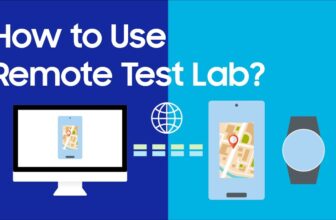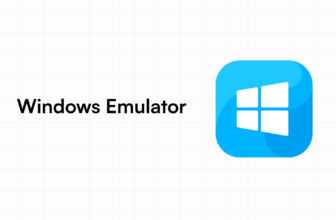
The microservices era of service-oriented architectures (SOA) and API-first systems has made programs less rigid. Rather, they consist of a collection of independently deployable services that connect via APIs or messaging protocols.
These agents, also referred to as services, need to work together seamlessly to create value. While unit and end-to-end testing are must-haves, there is a wide gap between them that often gets overlooked: the interaction of services with each other. This is where agent-to-agent testing enters.
This article explores in depth what agent-to-agent testing is, why it is important, the techniques, and how it helps in validating inter-service communication and API workflows.
Table of Contents
Understanding Agent-to-Agent Testing

Source: medium.com
With contemporary applications moving towards distributed systems and microservices, services or agents are more dependent on each other to finish workflows. Agent-to-agent testing is all about making sure the intercommunication among these services is correct, data sent and received, APIs invoked, and failures properly handled.
In contrast to unit or component testing, this procedure tests basic interactions between independent-of-each-other services over REST, gRPC, or message queues. It is especially essential in systems where even small miscommunications can create serious issues.
Agent-to-agent testing emulates actual service interactions so that teams can identify integration problems early on, ensure workflows, and develop more robust and reliable systems.
Why perform Agent-to-Agent Testing?
Each service develops independently in distributed systems. This adaptability brings risk; a modification in one service could silently break another. Agent-to-agent testing reduces these risks by offering:
Early Detection of Integration Failures- Modifications to request structures, endpoints, headers, or protocols can silently break the subsequent services. Agent-to-agent tests can detect these modifications during development or CI.
Validation of Service Contracts- Since APIs tend to change often, there are numerous changes in them. A tiny breaking change in the contract (e.g., a field rename, type change) may lead to runtime faults. Testing guarantees that the actual data exchanged is as desired.
Faster Feedback Than End-to-End Tests- E2E/UI testing is slow and unreliable, while, on the other hand, agent-to-agent tests are faster, easier to troubleshoot, and more independent. This permits more periodic and consistent continuous integration runs.
Enhanced System Resilience- By exercising interactions in multiple conditions (timeouts, retries, etc.), developers can guarantee that services don’t bring down the whole system.
Lower Downtime and Incident Frequency- Agent-level verification can avoid incidents due to misaligned assumptions between services or teams, particularly in high-autonomy environments where there are lots of independent teams.
Support for Backwards Compatibility- As services develop, newer versions are sometimes required to coexist with older consumers. Agent-to-agent testing ensures newer changes are backward-compatible, so legacy integrations do not fail.
Confidence During Deployments- Testing between services before deployment decreases the likelihood of shipping breaking changes to production. This is particularly vital for teams that have continuous delivery or blue-green deployments.
Improved Team Autonomy with Safety Nets- Within big organizations with multiple autonomous teams, agent-to-agent tests serve as contracts or safety nets. They enable teams to design and deploy independently without the requirement for continuous cross-team coordination.
Early Identification of Security or Auth Problems- Several services use tokens, scopes, or API keys for authorized communication. Interactions tested this way can unearth authorization failures, stale credentials, or incorrect policies early in the pipeline.
Key Elements to Validate in Agent-to-Agent Testing

Source: apidna.ai
During testing communications among services, one needs to extend beyond mere verification of whether they can communicate. Agent-to-agent testing needs to verify a variety of technical and functional properties in order to secure smooth, safe, and reliable communications.
API Process Validation- One of the most critical aspects to check is the API processes. This involves considering request and response structures to ensure that important fields are present, payloads follow the expected scheme, and data types are correct. Slight differences in field names or formats might cause runtime problems or silent failures.
Authentication and Authorization- Authentication and authorization are also important. Every service has to be authenticated correctly, usually by tokens such as OAuth or JWT, and authorized to do certain actions. Agent-level tests should ensure expired tokens, invalid scopes, or invalid credentials are handled securely and correctly.
Headers and Metadata Handling- Another essential area is headers and metadata. Headers tend to be used by services for content negotiation, tracing (e.g., correlation IDs), and routing decisions. These need to be suitably set and substantiated during testing to be traceable and observable.
Resilience and Fault Tolerance- One should consider how services will deal with timeouts, retries, and failures in order to ensure system resilience. Network delay or downstream outages can be simulated to guarantee retry logic, fallback action, and timeout configurations. This is particularly necessary in distributed systems where partial failures are the norm.
Backward Compatibility- Services must also continue to be backward compatible as they move forward. Tests must confirm how various service versions work with each other and that new updates will not break older consumers. This is particularly significant in microservices environments where independently deploying teams are involved.
Data Consistency and Idempotency- Data consistency is another area of concentration. Data passing between services must maintain integrity, neither loss nor duplication, or transformation error. Idempotency (handling repeated requests without unwanted side effects) should also be verified.
Security, Monitoring, and Performance- Lastly, performance, security, and monitoring cannot be overlooked. Along with determining latency between services, agent-to-agent testing must ensure logs, metrics, and traces are properly generated for observability.
Common Testing Methodologies for Agent-to-Agent Verification

Source: softude.com
When testing service interactions, various methodologies are used for different purposes based on system architecture, communication pattern, and test objectives. The following are the most common methodologies for verifying agent-to-agent communication.
Contract Testing- Contract testing verifies that the interface between a service provider and user is always consistent. Specifying and applying API contracts enables test teams to prevent breaking changes, like changes in data types or field renames. Modern contract testing tools, such as Spring Cloud Contract or Pact, enable test teams to do that verification automatically in CI pipelines.
Integration Testing- This technique confirms that services perfectly interact with each other, at times within a test environment, including real dependencies such as downstream APIs or databases. It is concerned with checking real data flow, business logic, and service orchestration, and hence is a good technique to catch early integration faults.
Mocking and Stubbing- Mocking replaces real services with fake ones to test the system independently. Testers can manipulate the responses, mock errors, and check the edge cases without the use of external services. It is particularly helpful when there are still developing services or inaccessible services.
Synthetic Transactions- These are authored, synthetic interactions sent between services to exercise critical paths, such as authentication, billing, or user flows. Synthetic tests are typically run continuously against staging or even production environments to ensure that key service interactions are functioning properly.
Asynchronous Message Testing- For those that employ message queues or event streams, testing emphasizes proper publishing, formatting, and consumption of messages. This ensures that agents can effectively process events consistently, preserve schema compatibility, and manage out-of-order or duplicate messages.
Load and Performance Testing (Agent-Level)- This testing replicates excessive traffic between services to see how they respond under stress. It detects latency problems, throughput limits, and resource bottlenecks that may interfere with inter-service communication at high loads.
Contract Drift Detection- Services can shift their APIs over time and not change shared contracts. Tools for detecting drift keep watching out for such changes continuously, keeping all services in sync and avoiding mismatches that result in silent failures.
Cloud-Based Testing- Today’s testing demands consistently, quickly, and reliably executing integration and agent-level tests across different environments. This is particularly necessary when verifying communication between agents in distributed systems, where the conditions of the real world, like different network latencies, authentication layers, and API versioning, have to be simulated.
Best Practices for Agent-to-Agent Testing
Mentioned below are some best practices for agent-to-agent testing:
Set Clear Testing Objectives- Initiate by establishing precise objectives for what needs to be tested between agents. Select major interaction scenarios and strive to validate both operational results, such as task accomplishment, as well as non-functional features such as response time and reliability. Precise objectives will direct test design and demand priority on important interactions.
Utilise Realistic and Varied Test Environments- Testing should cover a broad spectrum of environments to imitate real-world conditions. Include normal operation scenarios, edge cases, and stress conditions like network delays or message loss. Diverse environments help ensure agents can handle variability and unexpected situations robustly. To attain this level of extensive testing, a platform like LambdaTest is a perfect choice. The platform helps in delivering the essential means and access to various environments.
LambdaTest is an AI testing tool. It is used to test web and mobile applications manually and automatically at scale. This platform also allows testers to perform mobile and website testing in real-time by providing access to more than 3000 environments, real mobile devices, and desktop browsers online.
The cloud-based platform ensures the reliability and quality of microservices and API workflows before they reach production. This is because of its native integration support for CI/CD pipelines, service-level mocking/stubbing, and API testing. Additionally, you can also use various automation AI tools to actively identify regressions, monitor for test-run flakiness, and auto-heal scripts. This helps decrease the manual effort in maintaining integration tests while increasing feedback loops between services.
Track and Log Agent Interactions in Depth- In-depth logging of messages passed, decisions taken, and state transitions is essential for debugging and performance analysis. Detailed logs serve traceability, allowing testers to identify failures or aberrant behaviour and assist in comprehending intricate agent dynamics.
Validate Communication Protocols Strictly- Agents have to adhere to communication protocols in terms of message formats, sequences, and timing. Correct handling of expected messages, as well as resiliency to malformed or unexpected inputs, should be tested. Time constraints, such as timeouts and deadlines, should be tested to guarantee efficient interactions.
Include Human-in-the-Loop Testing When Applicable- If agents are in contact with humans, include testing that involves human feedback and real-time adaptation. This allows agents to deal with dynamic inputs and learn from user interactions, making them more usable and acceptable.
Document Test Cases and Results Extensively- Keep clear records of test scenarios, steps, and outcomes to make tests reproducible and auditable. Appropriately documented testing permits continuous progress by offering clear feedback for developers and testers.
Conclusion
In conclusion, Agent-to-agent testing bridges an important gap in the testing spectrum of software. It ensures that independently deployed services will talk to each other reliably, even as each one changes. In a microservices world, every bit as much as what’s inside, the interface between services should be tested.
Through the use of contract testing, integration environments, and resilience testing, teams can provide software that not only functions but also functions in harmony.







